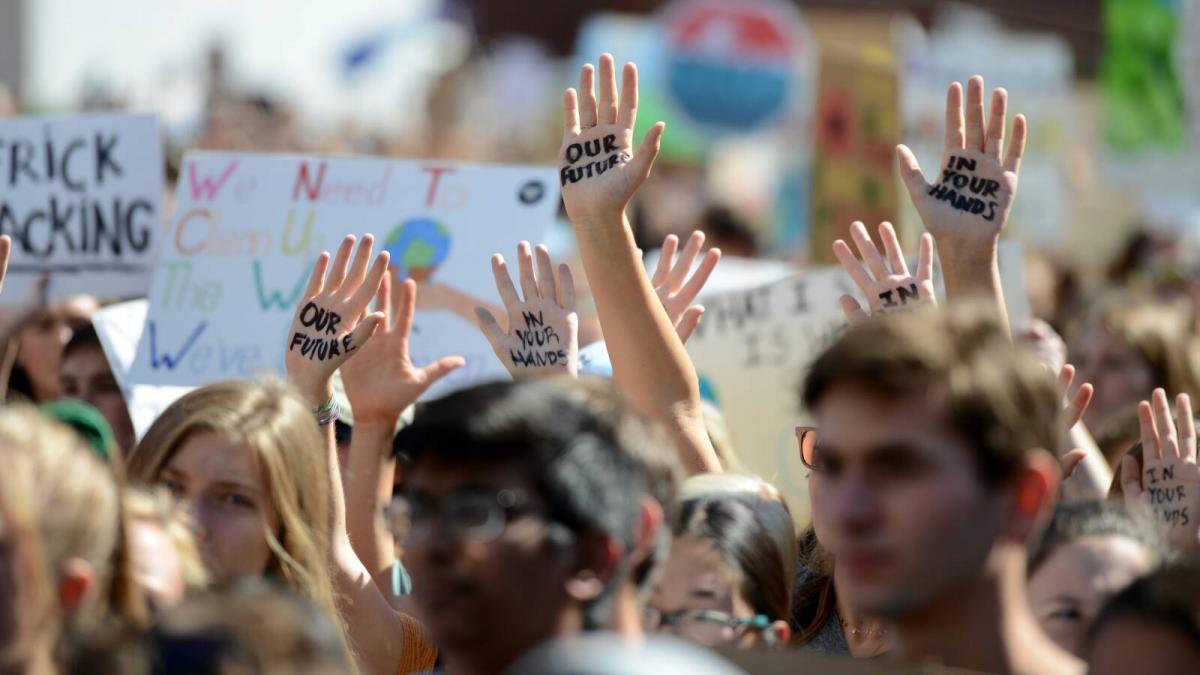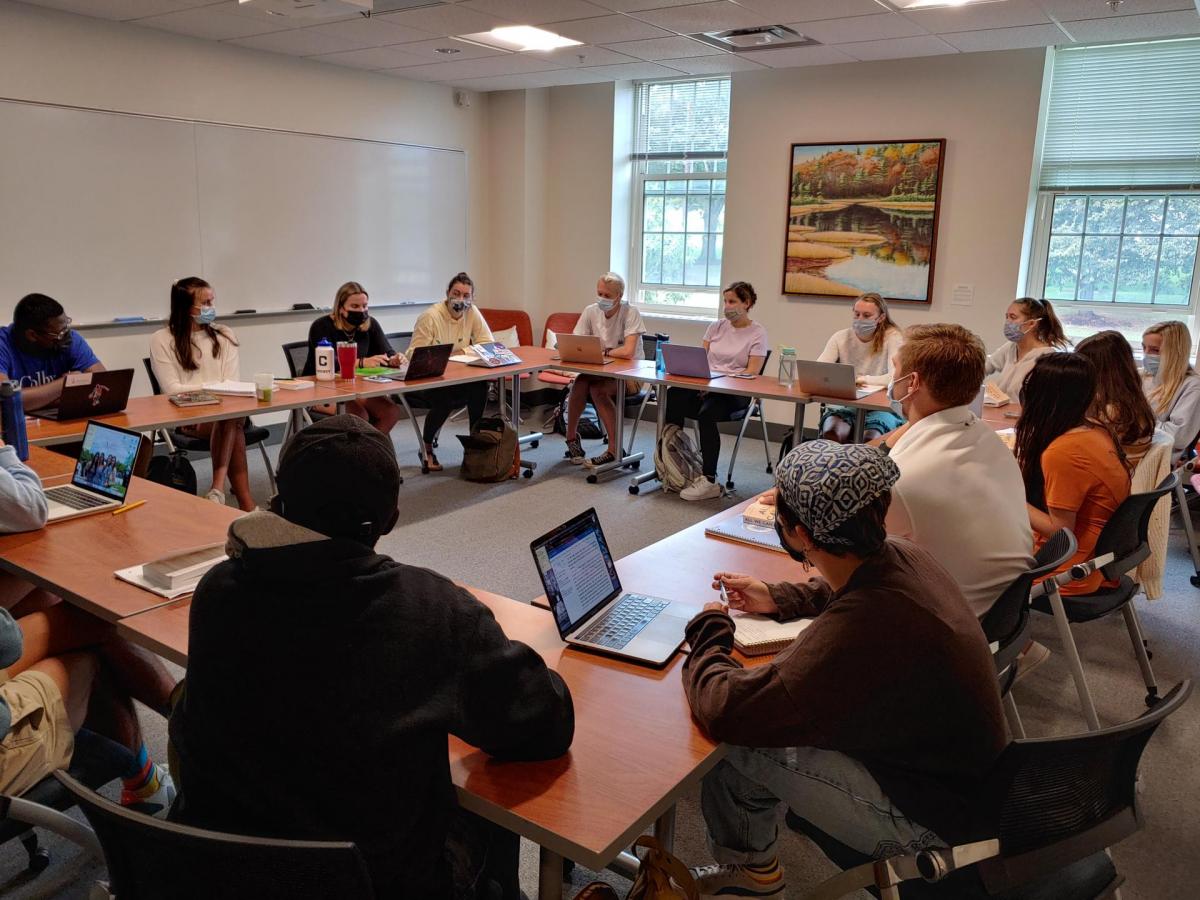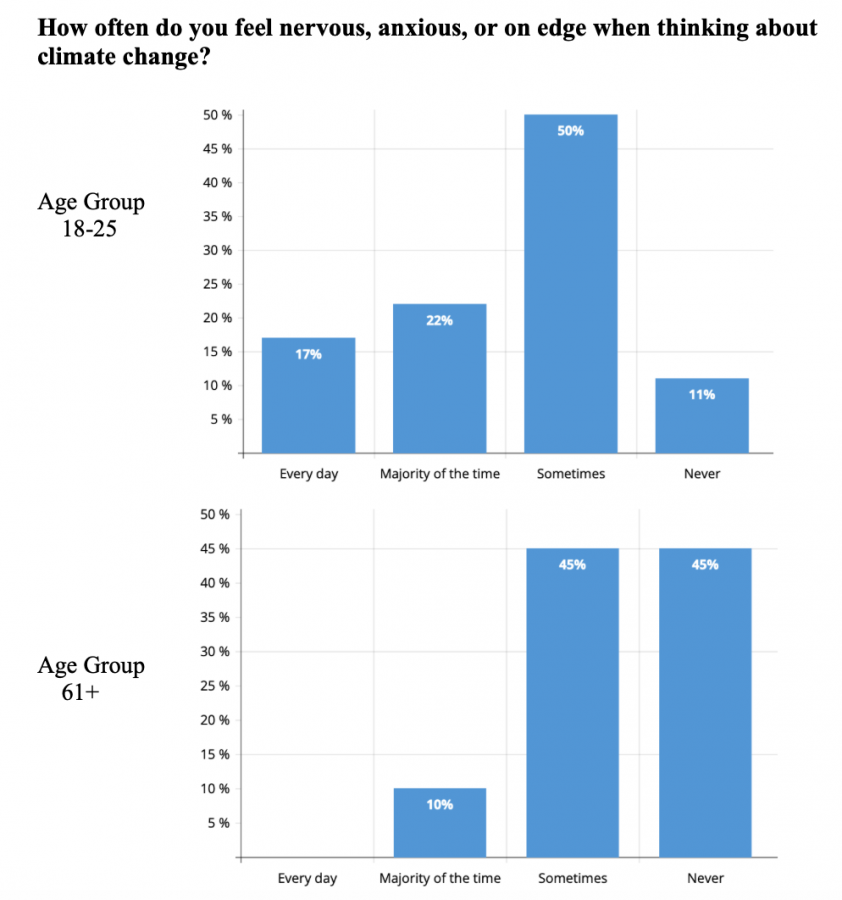California’s youth are anxious about climate change and need to see concrete action
Amanda Cabral is a recent Colby College graduate working in affordable housing at Freddie Mac and can be reached at atcabr23@gmail.com. Gail Carlson teaches in the Environmental Studies Department and directs the Buck Lab for Climate and Environment at Colby College. She is the author of “Human Health and the Climate Crisis.” She can be reached at gcarlson@colby.edu.
Cities in California are experiencing some of the most devastating climate change impacts in the continental U.S., including severe droughts, heat waves, and worsening wildfires. California’s youth are particularly worried. They face a long future of climate extremes, with consequences for their health, well-being, education, and livelihood.
California’s youth have no choice but to pay attention to the climate crisis. Decision-makers must incorporate their needs into climate plans and let youth lead.
In January of this year, we surveyed California adults to gauge their knowledge, attitudes, and personal experiences with climate change. Our results revealed widespread awareness about climate change, but some important differences between younger and older respondents.
California’s youth care deeply about climate change
Nearly 90% of all respondents agreed that climate change poses a threat to the health and safety of people. Participants identified drought as the impact of highest concern (77%), followed by heat waves (70%), wildfires (56%), rising oceans (54%), and severe storms (37%). Half of 18- to 25-year-olds listed all five impacts as a concern, compared to just 22% of those 61 and older.
When asked how climate change is affecting them, many respondents listed health impacts.
- “When the fires are affecting the area around me, it becomes a little more difficult for me to breathe.”
- “Warmer temperatures make it harder to breathe.”
- “The winds, fire, and extreme heat all contribute to my allergies, asthma, making them almost constant rather than seasonal.”
- “Climate change is triggering my anxiety.”
- “As a truck driver, weather changes affect my driving safety.”
Respondents also reported worrying about water shortages, utility costs, and raising children in an uncertain future. Interestingly, 18- to 25-year-olds provided much more detailed and personal responses compared to their older cohorts; young adults have a lot to say about climate change.
Age was also an important variable when considering the likelihood of adverse mental health responses to climate change. Those 18-25 were more likely to report “feeling nervous, anxious, or on edge” every day or most of the time than those aged 61 or older. Overall, 89% of the younger group expressed some anxiety compared to just 54% of the 61 or older group.
The youngest group was more likely to report anxiety due to the impacts of their “personal behaviors on the earth” and “personal responsibility to help address environmental problems.” Respondents who had a direct experience of the health consequences of wildfires were also much more likely to report anxiety about personal behaviors and responsibility.
When it came to decreasing air quality after wildfires, 18- to 25-year-olds were nearly 50% more likely than those 61 or older to report worrying about the effects on their health. Exposure to wildfire smoke is a well-known cause of illness and death. The American Lung Association cites particle pollution from wildfires as triggering asthma exacerbations, heart attacks, and strokes, along with coughing, wheezing, bronchitis, and colds in children who breathe smoky air.
“When you walk outside it literally looks like it’s snowing and raining ash,” said one respondent. “Just walking from my car inside I felt really, really gross. And I know it’s unsafe for kids to do sports because of the air quality.”
Our results add to the growing body of evidence that young people around the world are experiencing a great deal of eco-anxiety — extreme worry about current or future harm caused by climate change or other environmental problems and associated concern about one’s future and the future of next generations. Eco-anxiety is a rational emotional response to a serious threat like climate change, even though people experience it in different ways. For some, it is debilitating. For others, it spurs action.
What can cities do?
Although our survey did not ask specifically about cities, we did ask if the state is doing enough to lessen the impact and likelihood of wildfires. Less than 10% of respondents answered yes, 57% said no, and 33% said “I do not know what the state is doing.” Nearly identical responses were given when asked if “California is doing enough to solve the water crisis.”
When asked how they are planning for a climate-troubled future, 18- to 25-year-olds gave detailed, personal responses that centered around lifestyle changes, such as growing their food, pursuing a career in environmental science, not having kids, or taking extra precautions to protect against “things we couldn’t imagine happening in our area.”
One young respondent said, “Climate change has affected me in terms of my own personal preparedness. I’m more nervous about my housing being torn apart from fires or flooding because I don’t think the state’s infrastructure is really prepared for this in the long run.”
Young Californians, many of whom have lived experiences with climate-fueled wildfires and drought, tend to see their futures as rather grim and are starting to seek help. Many are taking the initiative by engaging with legislative campaigns or getting their hands dirty growing food.
Climate-anxious youth also need to be able to talk about their feelings and experiences with others — including trained professionals — as well as learn coping strategies and ways to take action. Many schools already offer some counseling services, but cities can play a larger role in creating and funding similar programs.
Los Angeles County Public Schools, in partnership with the LA County Office of Education, invested in mental telehealth services for its students. The city of New York recently announced new support for child and family mental health. While these programs are not aimed explicitly at eco-anxiety, cities can create similar programs that focus on supporting young people with climate anxiety.
Perhaps the most impactful way that cities can respond is by creating comprehensive and community-driven climate action plans. The state’s local government toolkit includes strategies for transitioning to climate-friendly energy and transportation systems, land use policies, and resource management.
Cities should also collaborate with diverse community groups and build awareness about their response and mitigation strategies. How climate change affects physical and mental health may be particularly important for local governments to communicate, as this understanding could drive greater investment in health care systems as a climate preparedness strategy.
Cities can empower young people in the creation and implementation of climate plans through youth climate commissions, such as one in LA County that connects youth to people working on climate change. Gonzales, California, also created ways for young people to participate in city council and school board meetings through its youth council.
Overall, cities need to value the experiences of young people, prioritize their health and well-being, and empower them to participate in decision-making. The decisions made today will influence the lives of Californians for decades to come. They deserve the opportunity to chart their own futures and that of the planet.



